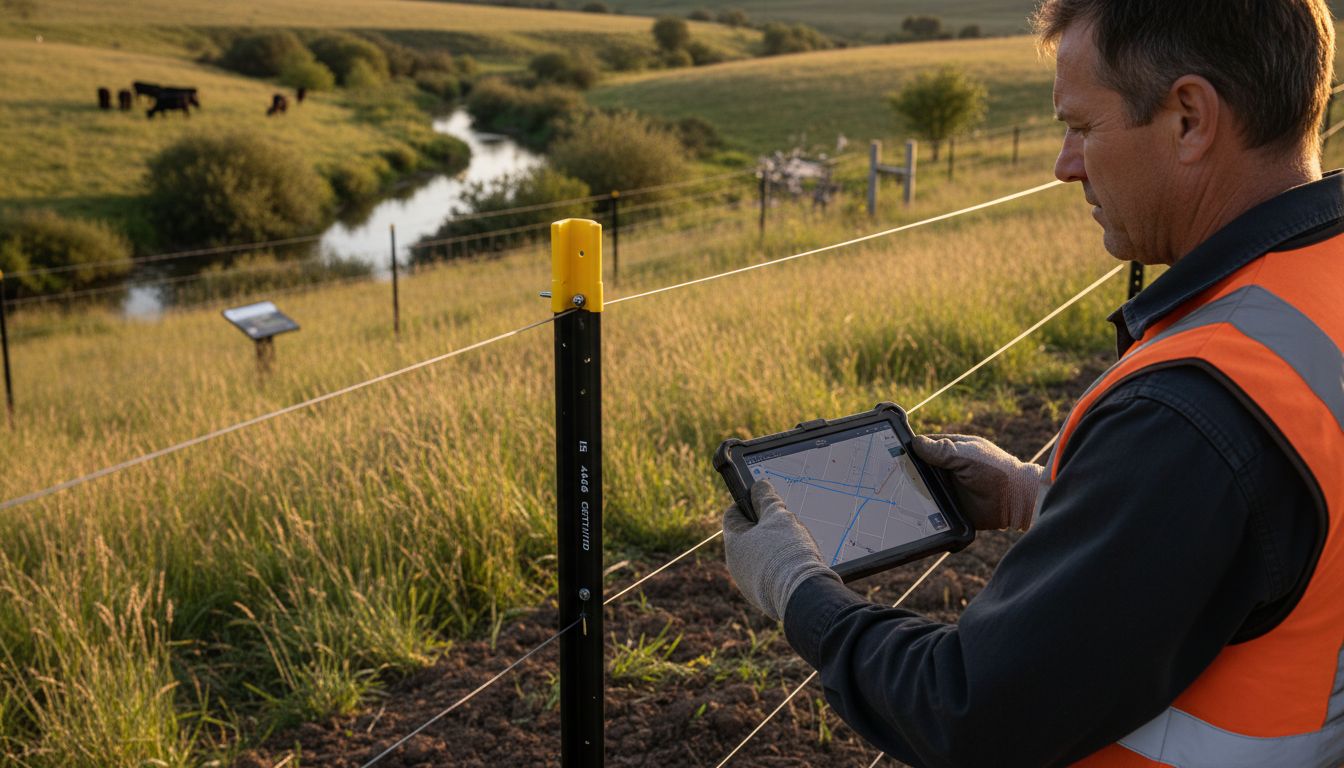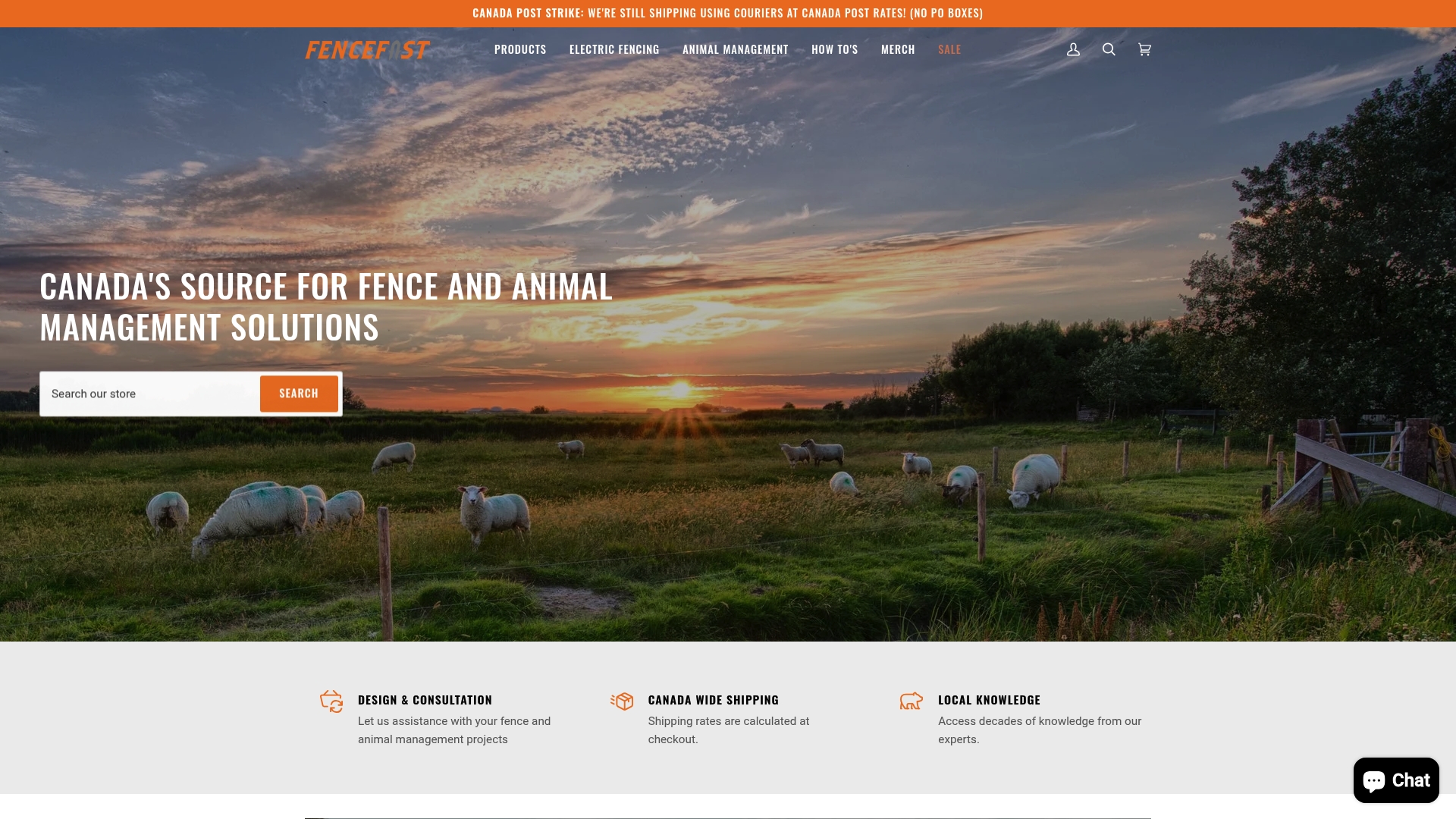Over half of all farmers face steep upfront costs when upgrading fencing, making financial support more important than ever. Farm fencing grants offer more than just help with property lines. They can improve livestock management, protect precious natural resources, and drive sustainable practices on working land. Understanding how these grants work can open the door to smarter infrastructure choices and greater farm productivity.
Table of Contents
- Farm Fencing Grants Explained and Defined
- Types of Farm Fencing Grants Available
- Eligibility Criteria and Application Process
- Managing Costs and Funding Utilization
- Compliance, Reporting, and Common Mistakes
Key Takeaways
| Point | Details |
|---|---|
| Farm Fencing Grants are Strategic Investments | These grants not only fund infrastructure but also contribute to environmental stewardship and enhanced agricultural productivity. |
| Eligibility and Application Requirements are Key | Successful applications require documentation of agricultural land management and alignment with environmental objectives. |
| Cost Management is Crucial | Effective budgeting, including prioritization of cost-effective materials, maximizes funding utilization and reduces long-term expenses. |
| Compliance and Reporting are Essential | Maintaining accurate documentation and adhering to guidelines is critical to avoid common pitfalls and ensure grant approval. |
Farm Fencing Grants Explained and Defined
Farm fencing grants represent targeted financial support designed to help agricultural producers upgrade, repair, or construct essential boundary and livestock management infrastructure. According to Wikipedia, these agricultural subsidies are government incentives paid to farmers to supplement income and support infrastructure improvements that enhance overall farm productivity.
These grants serve multiple strategic purposes beyond simple boundary demarcation. Wikipedia highlights that programs like the Environmental Quality Incentives Program (EQIP) assist farmers in improving environmental quality through cost-sharing and technical assistance. This means fencing grants aren’t just about property lines - they’re investments in soil conservation, livestock management, and ecological stewardship.
Typical farm fencing grants can cover various infrastructure needs, including:
- Perimeter boundary fencing
- Livestock containment systems
- Rotational grazing paddock development
- Wildlife management barriers
- Conservation-oriented fencing projects
To qualify for these grants, farmers typically must demonstrate how their proposed fencing project will contribute to broader agricultural, environmental, or land management objectives. Successful applicants often show how their infrastructure improvements will:
- Protect natural resources
- Enhance livestock management efficiency
- Implement sustainable agricultural practices
While specific grant requirements vary by region and funding source, most programs share common evaluation criteria focused on practical agricultural improvements and environmental conservation. Government Grants for Farm Fencing Explained provides additional details about navigating these complex funding opportunities.
Types of Farm Fencing Grants Available
Farm fencing grants come in diverse categories, each designed to address specific agricultural and environmental needs. According to Nofence, emerging technologies are expanding the traditional understanding of fencing support, with innovative funding options now covering advanced livestock management solutions.

Conservation-Oriented Grants represent a significant category of farm fencing financial support. Gov.uk highlights that Countryside Stewardship Grants specifically target projects that enhance environmental protection, such as permanent electric fencing designed to manage livestock movement while preserving ecological integrity.
Farm fencing grants typically fall into several key categories:
- Infrastructure Development Grants
- Environmental Conservation Grants
- Livestock Management Support Grants
- Sustainable Agriculture Grants
- Wildlife Corridor Protection Grants
Each grant type has unique qualification criteria and specific objectives. Some focus exclusively on:
- Boundary establishment
- Predator protection
- Rotational grazing implementation
- Soil conservation efforts
- Native habitat preservation
Farmers interested in these grants must carefully document their project’s broader agricultural and environmental benefits. 7 Essential Types of Livestock Fencing can help you understand the strategic approaches that make grant applications more compelling.
Eligibility Criteria and Application Process
Navigating farm fencing grants requires a strategic approach to meeting specific eligibility requirements. Gov.uk emphasizes that applicants must carefully demonstrate their project’s alignment with broader agricultural and environmental objectives to successfully secure funding.
The application process typically involves several critical steps that farmers must meticulously follow. According to Nofence, successful grant applications require comprehensive documentation that clearly articulates the project’s potential impact on sustainable farming practices and ecological management.
Key eligibility criteria often include:
- Proof of active agricultural land management
- Detailed project proposal demonstrating environmental benefits
- Compliance with local agricultural regulations
- Minimum and maximum land acreage requirements
- Demonstrated need for infrastructure improvement
The standard application typically requires:
- Comprehensive farm property documentation
- Detailed fencing project plans
- Environmental impact assessment
- Budget breakdown and cost justification
- Supporting technical specifications

Applicants should prepare for a competitive process that demands thorough preparation and clear communication of their project’s strategic value.
How to Install Electric Fence for Effective Livestock Control offers additional insights into creating compelling grant applications that highlight technical expertise and environmental consciousness.
Managing Costs and Funding Utilization
Effective cost management is crucial when navigating farm fencing grants, requiring strategic planning and precise financial tracking. Teagasc emphasizes the importance of using certified materials like IS 436 standard posts to ensure durability and maximize funding efficiency, ultimately reducing long-term infrastructure expenses.
Farmers must adopt a comprehensive approach to funding utilization that goes beyond immediate project costs. FRS Fencing highlights how selecting approved materials like Dura2 posts can provide both economic and environmental benefits, enabling farmers to optimize grant investments while maintaining high-quality infrastructure.
Key strategies for managing grant funding include:
- Detailed budget forecasting
- Prioritizing cost-effective materials
- Implementing phased project development
- Tracking expenses meticulously
- Maintaining comprehensive financial documentation
Budget management best practices involve:
- Obtaining multiple competitive quotes
- Understanding full project lifecycle costs
- Planning for potential contingencies
- Aligning expenses with grant requirements
- Preserving financial flexibility
Successful funding utilization requires careful planning and proactive financial management. Understanding the Cost of Fencing Per Acre Explained provides additional insights into developing a strategic approach to agricultural infrastructure investments.
Compliance, Reporting, and Common Mistakes
Navigating the complex landscape of farm fencing grants requires meticulous attention to compliance and documentation. Gov.uk emphasizes that successful applicants must maintain comprehensive evidence of completed work, strictly adhering to established British Standards for construction and infrastructure development.
Reporting requirements can make or break a farm fencing grant application. Gov.uk highlights that precise documentation is crucial, with grant recipients required to provide detailed records that demonstrate exact alignment with original project proposals and environmental objectives.
Common mistakes farmers frequently encounter include:
- Incomplete project documentation
- Inadequate initial project planning
- Failing to track expenses meticulously
- Overlooking specific grant requirement details
- Missing critical submission deadlines
To avoid potential grant rejection, farmers should:
- Review guidelines exhaustively
- Maintain organized financial records
- Document every project stage
- Communicate proactively with grant administrators
- Seek professional guidance when uncertain
Successful grant management demands rigorous attention to detail and strategic planning. Government Grants for Farm Fencing Explained offers additional resources to help farmers navigate these complex requirements effectively.
Secure Your Farm’s Future with Expert Fencing Solutions
Navigating the complexities of farm fencing grants can be overwhelming when you are trying to manage costs, comply with regulations, and improve livestock management all at once. If you want to turn your grant application into a successful project that truly enhances your farm’s efficiency and environmental sustainability, you need reliable fencing supplies and expert support tailored to your unique agricultural needs. With challenges like meeting strict eligibility criteria, sourcing certified materials, and planning effective fencing layouts, it is crucial to partner with a trusted resource that understands these hurdles.

FenceFast.ca offers a comprehensive selection of top-quality fencing components, electric fencing systems, and livestock management tools designed specifically for Canadian farmers and ranchers. Whether you are applying for conservation-oriented grants or upgrading your perimeter boundary with durable materials, our products meet industry standards and simplify your installation process. Visit FenceFast.ca today to explore solutions that help you manage costs, stay compliant, and maximize your grant benefits. Take control of your fencing project now with our expert design consulting and nationwide shipping—your farm deserves nothing less.
Frequently Asked Questions
What are farm fencing grants?
Farm fencing grants are financial support programs designed to help agricultural producers with constructing, repairing, or upgrading fencing for boundary delineation and livestock management, ultimately enhancing farm productivity and environmental stewardship.
What types of projects can be funded by farm fencing grants?
Farm fencing grants can fund various projects, including perimeter boundary fencing, livestock containment systems, wildlife management barriers, and rotational grazing paddock development, all aimed at improving agricultural and environmental outcomes.
What are the typical eligibility criteria for applying for farm fencing grants?
Eligibility criteria often include proof of active agricultural land management, a detailed project proposal highlighting environmental benefits, compliance with agricultural regulations, and specific land acreage requirements.
How can farmers ensure successful grant applications?
Farmers can ensure successful grant applications by meticulously preparing documentation, demonstrating the project’s alignment with agricultural and environmental objectives, maintaining organized records, and adhering to precise reporting requirements.
